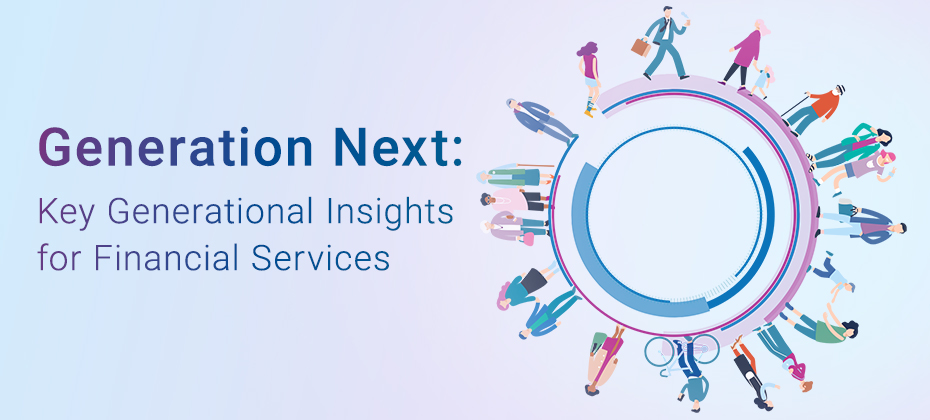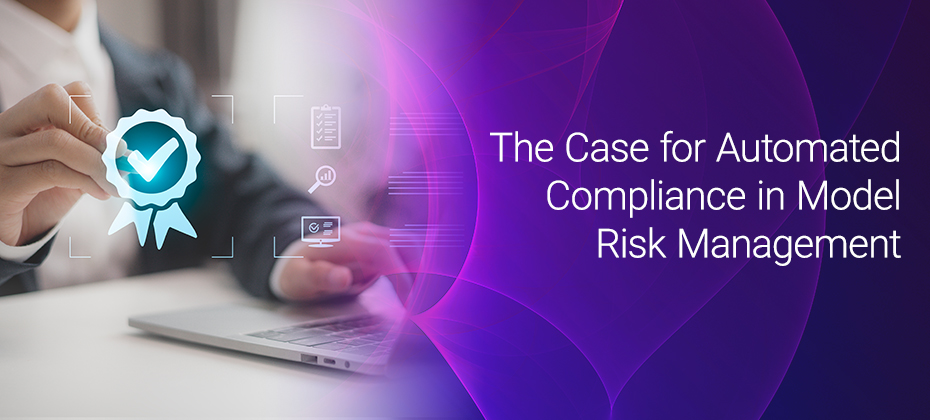Industries

In today’s digital payments landscape, fraudsters are constantly developing new tactics to exploit vulnerabilities. One of the most common credit card schemes financial institutions and merchants face are BIN attacks. But what exactly is a BIN attack, and how does BIN attack fraud work? What is a BIN attack? BIN attacks, a type of card not present fraud, target the Bank Identification Number (BIN) — the first six to eight digits of a credit or debit card number that identify the issuing financial institution. Fraudsters use these digits to systematically generate and test potential card number combinations. The goal of a BIN attack is to discover valid card numbers that can be used for fraudulent transactions. Because BINs are publicly available and consistent across card issuers, they provide a predictable framework for attackers. How does it differ from other types of payment fraud? Payment fraud takes many forms, but BIN attacks stand apart because of their scale and automation. Card testing fraud vs. BIN attacks: Both involve criminals running authorization attempts to identify valid card details. However, card testing typically uses data from a single stolen card, while BIN attacks systematically generate thousands of possible card numbers from a known BIN range. Account takeover fraud vs. BIN attacks: In an account takeover, fraudsters gain access to a customer’s existing account, often through phishing or stolen login credentials. BIN attacks don’t require account access — instead, they exploit card number patterns to guess valid accounts. What are the consequences of a BIN attack? BIN attacks don’t just result in stolen card numbers — they create wide-ranging business risks that can impact operations, revenue and customer trust. For financial institutions and merchants, the ripple effects can be significant: High transaction volumes: BIN attacks are carried out using automated scripts or bots that fire off thousands of transaction attempts per minute. This traffic can overwhelm payment systems, slow down processing and disrupt the checkout experience for legitimate customers. Increased chargebacks: Once fraudsters identify valid cards, they make unauthorized purchases that often result in chargebacks. Both merchants and issuers absorb these losses — merchants lose revenue, while issuers reimburse cardholders. Network and processing costs: Every transaction attempt — even those declined during a BIN attack — still incurs network and processing fees. Merchants and issuers can end up paying for thousands of authorization requests, draining resources. Reputational damage: Today’s consumers expect seamless and secure payments. If they experience frequent declines, blocked cards or fraudulent activity, their trust in the institution or merchant erodes. How to protect against BIN attack fraud Mitigating BIN attacks requires a proactive, layered defense strategy. Financial institutions and merchants should consider: Advanced fraud detection and analytics: BIN attacks generate massive volumes of fraudulent traffic. By leveraging AI-driven analytics and machine learning, institutions and merchants can monitor for unusual transaction patterns, velocity spikes and bot-driven activity. Identity and device intelligence: Fraudsters often hide behind bots, stolen IP addresses and compromised devices. With identity verification and device intelligence solutions, merchants and institutions can better determine whether a transaction is coming from a legitimate customer or a fraudster testing card details. Multi-factor authentication (MFA): BIN attacks succeed on speed and automation, firing off thousands of transactions. MFA can help disrupt this process by requiring additional proof of identity from the customer, such as facial recognition or one-time passcodes. Credit card authentication: BIN attacks exploit the gap between payment credentials and the identity of the person using them. A solution like Experian LinkTM seamlessly connects the payment instrument with the digital identity presented for payment, helping merchants to reduce false declines, fraud and operating expenses. Build a stronger defense against BIN attacks BIN attacks are a growing threat in today’s digital payments ecosystem. But with the right safeguards in place, organizations can stay ahead. Learn how Experian can help you strengthen your fraud defenses to reduce losses and protect customer trust. Learn more

This is the first in a series that will highlight auto marketing trends to help you drive more effective marketing campaigns. With the second half of the year underway, one theme continues to prevail in conversations among auto marketers: measurement. With more focus to prove ROI, optimize campaigns in real time, and understand the full consumer journey, marketers are doubling down on attribution while sharpening their analytics tools. One of the most widely adopted platforms in this space is Google Analytics 4 (GA4). Since its full rollout, GA4 has replaced Universal Analytics for digital measurement. Its event-based model offers new ways to track behavior and measure performance, especially in complex, multi-touch journeys like auto shopping. Let’s break down four quick tips to help you unlock the full potential of GA4—plus a quick summary to dial in this type of measurement. GA4 Tune-Up Tips for Smarter Auto Marketing: 1. Event-Based Tracking Offers Full-Funnel Visibility Unlike Universal Analytics, GA4 focuses on events (rather than sessions) by tracking actions such as scroll depth, video views, CTA clicks, and more, giving you detailed insights into how users engage with your site. It’s especially helpful for A/B testing and understanding micro-conversions across the buyer’s online journey. 2. Use Clean, Consistent UTM Parameters UTM parameters tell GA4 “where” your traffic comes from. However, if they’re inconsistent or overly complex, your reports will be too. Use a simple naming convention for channels and campaigns so you can easily see what’s working. See example chart below: 3. Set Up GTM to Capture the Key Events Google Tag Manager (GTM) tells GA4 “what” happens once a consumer arrives to your website. Ensure GTM is set up to record important on-site actions—including page views, form submissions, phone clicks, or test drive bookings. Start with GTM testing by using Preview Mode and Tag Assistant. 4. Extend Your Data Retention Window By default, GA4 only stores user-level data for 2 months. If you want to track long buying cycles or compare year-over-year trends, go into your GA4 settings and extend the retention period to 14 months. GA4 Tune-Up Tips Summary: GA4 is Google’s enhanced analytics platform, built to give marketers a more flexible, cross-platform view of user behavior by using an event-based model designed for the future of measurement. With industries like automotive — offline interactions, third-party sites, and long purchase paths are common. GA4 often needs to be supplemented with additional tools or CRM integration to capture the full buying journey. According to Neilsen, measurement of ROI across channels is more important than ever and marketers have an opportunity to fine tune it. Discover how Experian Automotive can help measure your marketing performance with solutions like OmniImpact for Automotive™ and an Auto Response Analysis. Next Up... From personalized follow-ups to omnichannel messaging, forward-thinking retailers are evolving how they communicate with today’s car shoppers, and measurement is just one piece of the puzzle. In our series, we’ll explore another focus for Auto Marketers in the latter half of 2025: Messaging and Communication with your consumers.

Nearly 19 million U.S. households remain unbanked or credit-invisible,1 not due to a lack of financial responsibility but because traditional credit models alone may not include key financial behaviors. These individuals often save, earn and budget wisely, yet conventional scoring systems do not recognize them. We’ve recently partnered with Plaid, the trusted leader in open finance, to change that. Together, we’re putting cash flow underwriting front and center — giving lenders access to real-time, consumer-permissioned financial data that paints a fuller, more accurate picture of creditworthiness. Why cash flow data matters now In the U.S., many consumers with limited credit histories want to build their profiles but don’t know how. Cash flow underwriting bridges this gap. Cash flow insights reveal real-world financial activity — like income patterns, spending habits and account balances — in real time. This empowers lenders to make smarter, faster and more inclusive credit decisions, while helping consumers gain access to the financial services they deserve. What cash flow insights deliver By incorporating cashflow data into your decisioning strategy, you can: See beyond the score with a richer view of a consumer’s financial health. Accelerate approvals with more accurate and timely insights. Expand access to credit while strengthening portfolio diversity and reducing risk. Download our infographic to see how cash flow underwriting is reshaping lending — and how you can lead the change. Download infographic 1Mullen, C. (2024, November 13). Underbanked US population grows to 14.2%, FDIC finds. Banking Dive.

Credit decisioning has traditionally relied on static data like credit bureau scores, income statements, and past repayment history. As financial behavior becomes more dynamic and consumer expectations shift toward instant decisions, real-time data is emerging as a powerful tool in reshaping how lenders assess risk.

Lending fraud – what is it? Lending fraud is a deceptive practice in which individuals or entities intentionally provide false or misleading information during the loan application process to secure credit or financial gain. This can include using fake identities, inflating income, forging documentation, or applying for loans without the intention of repayment. The consequences are significant: lenders suffer financial losses, consumers experience identity theft or damaged credit scores, and the economic system bears increased risk and regulatory scrutiny. Loan fraud is a growing concern across consumer, commercial, and mortgage lending sectors, affecting institutions of all sizes. How do I safeguard my organization from loan fraud? Preventing lending fraud is a complex, ongoing challenge that requires a multi-layered and holistic approach. As fraud tactics become more sophisticated, especially with the rise of generative AI and digital lending channels, financial institutions must continually evolve their defenses. Strong identity verification is the first line of defense. Lenders should implement advanced authentication tools beyond basic KYC (Know Your Customer) checks. This includes biometric verification, document verification, and device intelligence —technologies that assess the authenticity of the user and the device used during the application process. These tools can help detect synthetic identities — false identities created using a blend of real and fabricated information — increasingly used in loan fraud schemes. Another crucial strategy is real-time data analytics and behavioral monitoring. Lenders can quickly identify anomalies that may indicate fraudulent activity by analyzing applicant behavior, credit history, device usage patterns, and geolocation data in real time. For example, if an applicant submits multiple loan applications from different IP addresses in a short time frame, that could raise a red flag for potential lending fraud. Employee training and awareness are also essential. Frontline staff must be equipped to identify warning signs, such as inconsistencies in application documents or rushed, high-pressure loan requests. Regular fraud prevention training helps employees stay alert and aligned with the organization’s risk management protocols. 57% of financial institutions reported direct fraud losses exceeding $500,000 in the past year, with 25% exceeding $1 million.1 Consumers reported losing more than $12.5 billion to fraud in 2024, which represents a 25% increase over the prior year.2 In addition, robust internal controls and auditing mechanisms are critical in prevention. Organizations should regularly audit loan origination processes and investigate unusual approval patterns to detect insider fraud or systemic vulnerabilities. Finally, consumer education is a vital, often overlooked, aspect of combating loan fraud. Lenders should provide resources to help customers understand the risks of identity theft, encourage them to monitor their credit reports regularly, and empower them to report any suspicious activity. A well-informed customer base can be a valuable early warning system for fraud. With digital lending becoming the norm, preventing lending fraud means staying ahead of increasingly tech-savvy fraudsters. Leveraging data, technology, and education together builds a stronger, more resilient fraud defense framework. Lending fraud + Experian – How we can help With access to the industry’s most advanced fraud detection and identity verification tools, partnering with us gives you a potent edge in combating lending fraud. As a global leader in data, analytics, and technology, our comprehensive and accurate sets of consumer information enable you to spot risks that might be invisible through conventional means. Our approach combines rich data insights with powerful machine learning algorithms, delivering fraud prevention tools that are intelligent, scalable, and highly adaptive. Our fraud detection technologies are designed to protect every stage of the lending lifecycle. From real-time identity verification and multi-factor authentication solutions to behavioral biometrics and device intelligence, so you can detect synthetic identities, manipulated applications, and other forms of loan fraud before they lead to financial loss. In an era where trust is currency, partnering with us doesn’t just help protect against lending fraud — it enhances your reputation as a secure, responsible lender. You gain the confidence of your customers by providing safe, streamlined lending experiences while meeting compliance requirements and reducing operational risk. With us, you’re not just reacting to fraud—you’re anticipating it, preventing it, and confidently growing your business. Learn more 1State of Fraud Benchmark Report. Alloy. (2024). 2New FTC Data Show a Big Jump in Reported Losses to Fraud to $12.5 Billion in 2024. Federal Trade Commission. (2025, March 10).

In 2025, home equity lending has re-emerged as a central theme in the American financial landscape—an evolution not driven by hype, but by hard data, economic realities, and consumer behavior. As homeowners grapple with inflation, rising consumer debt, and a persistent affordability crisis in housing, the home equity line of credit (HELOC) is gaining traction as a practical, flexible, and often misunderstood financial solution.

Experian is proud to be a Thought Leadership Sponsor at this year’s Federal Identity Forum & Expo (FedID)! We’re bringing the latest innovations in fraud prevention, identity verification, and behavioral analytics – all designed to help government agencies protect access, ensure trust, and stay ahead of evolving threats.

Financial institutions are sitting on a goldmine of data: customer transactions, credit histories, digital interactions, and more. But the real value is found when that data is transformed into insights that drive smarter decisions, faster responses, and better outcomes for both the business and consumers.

Risk management specialists, marketing departments, and customer success teams often work from different data sets, leading to inconsistent insights and missed opportunities. A unified data strategy can help break down these silos and unlock the full potential of an organization’s ability to turn raw data into actionable insights.

First mortgage delinquencies and foreclosures are increasing, particularly in later stages of delinquency. Home equity delinquencies remain low, signaling stability in that segment. Mortgage originations are up, with refinances beginning to recover. HELOC direct mail offers have surpassed first mortgage offers, driven by aggressive marketing and AVM-based personalization. Lenders using property data in marketing outperform peers relying on volume alone. Strategic focus for lenders: tighten risk analytics, integrate data into marketing, and adopt AVM-based personalization.

While Experian is known as a trusted source for credit insights, we have built a reputation for helping car shoppers, dealers, and lenders make informed decisions with confidence in the automotive space. Leveraging the value of data is key for identifying the latest trends in markets, behaviors, and industry changes. In fact, Experian’s Automotive Market Trends Report: Q1 2025 revealed the latest shifts in alternative fuel type registrations. Through the first quarter of this year, data found that growth in retail registrations for electric vehicles (EVs) is slowing compared to previous years, reaching 7.8%, down from 7.9% last year and 7.1% the year prior. Meanwhile, hybrids increased to 13.6% of new retail registrations through Q1 2025, from 11.3% through Q1 2024 and 8.8% through Q1 2023. Some of the uptick in hybrids may be attributed to consumers’ concerns with EV charging infrastructure and range anxiety. Hybrids are known to offer practical middle grounds—with the convenience of refueling and not having to plan longer trips around charging availability, this fuel type is becoming a more ideal choice for some. Vehicle preferences continue to vary by age group Through Q1 2025, Gen Z accounted for 14.8% of new retail hybrid registrations and 8.4% of EV registrations, while Millennials made up 15.9% for hybrid and 11.4% for EVs. On the other hand, Baby Boomers were at 16.3% for hybrids and 5.9% for EVs this quarter. Younger generations have naturally gravitated towards the gas-alternative fuel types as it aligns with their current lifestyle, including everyday commuting and the tech-forward features that these vehicles offer. As the automotive industry continues to evolve, staying attuned to the shifting landscape is essential. We’re committed to delivering insights that will help professionals make forward-looking decisions and stay ahead of the curve. To learn more about vehicle market trends, view the full Automotive Market Trends Report: Q1 2025 presentation on demand.

Collaboration between financial institutions and tech companies is essential to stay competitive and enhance the consumer experience.

While many view Experian as a credit bureau, we have a rich history in identifying and analyzing emerging market shifts and consumer behaviors across industries, particularly automotive. In fact, Experian’s Automotive Consumer Trends Report: Q1 2025 is one of our many reports that provide essential intel for automotive professionals navigating today’s competitive landscape. And this quarter’s report sheds light on SUVs (including SUVs and CUVs)—a segment that continues to pique consumers’ interest. Data in the first quarter of this year found 62.8% of new retail registrations were SUVs, accounting for the largest portion of market share over the last 12 months—compared to sedans (18.4%), pickup trucks (16.6%), and vans (2.2%). While overall SUV registrations highlight the growing dominance in this sector, a closer look at the data revealed that electric SUVs are emerging as a contributor to this momentum. In Q1 2025, electric SUVs accounted for 10.5% of new retail SUV registrations—and within that group, 30.7% were registered in the state of California. It’s crucial for automotive professionals to monitor these trends and prepare accordingly as the fuel type continues to grow. Which electric SUV models are catching buyers’ attention? Knowing which types of electric SUVs are attracting consumer interest can enable professionals to align their offerings with market demand. The Tesla Model Y made up nearly half of the new retail SUV registrations for exotic and luxury in the last 12 months, coming in at 40.5%. Interestingly, the next closest model, Ford Mustang Mach-E, trailed behind at 5.8%. Rounding out the top five were the Hyundai IONIQ 5 (5.5%), Honda Prologue (4.9%), and Chevrolet Equinox EV (4.3%). Understanding SUV registrations goes beyond data—it’s about spotting the shift in consumer behavior as this segment as well as the EV fuel type continues to break ground in the automotive landscape. This insight gives professionals the leverage they need to adapt and refine their strategies in the next era of mobility. To learn more about SUV insights, view the full Automotive Consumer Trends Report: Q1 2025 presentation.

Understanding generational trends and preferences is more crucial than ever, especially for the financial services industry.

With increasing regulatory complexities, compliance with model risk management requirements is crucial for operational resilience.